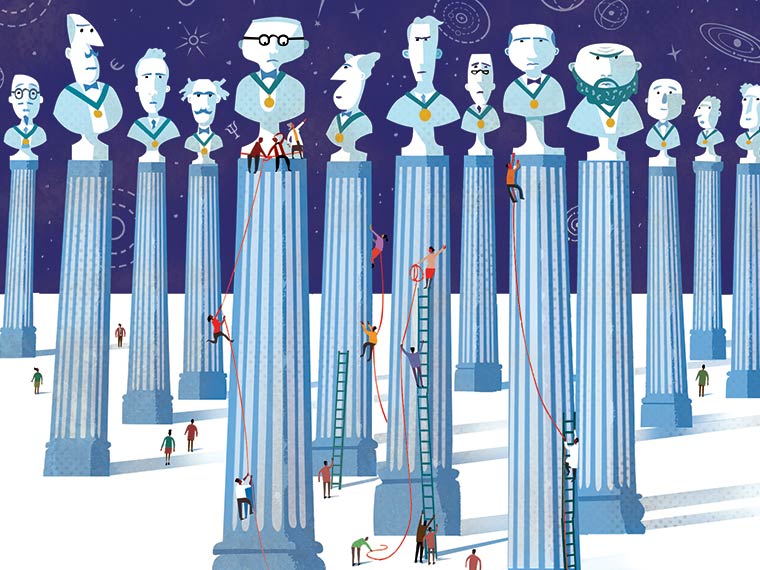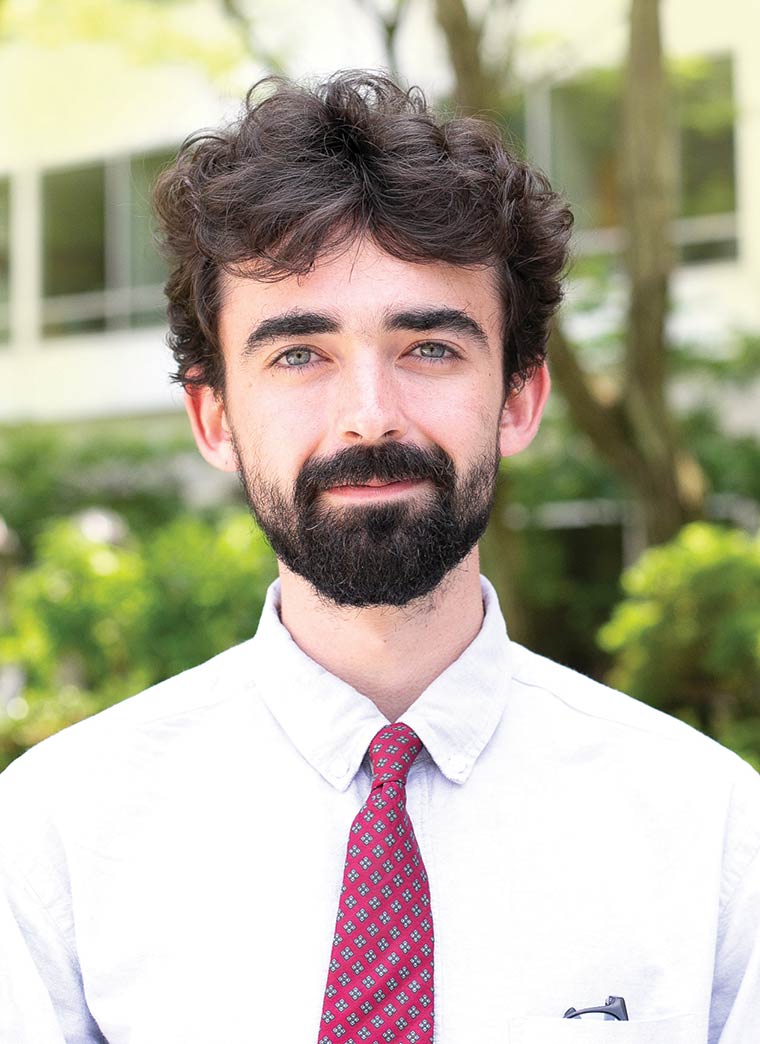
As a recent SLC graduate, I’ve had the good fortune to study physics through many different lenses, from history to philosophy. During college, I also directed the Shakespeare group, studied abroad at Oxford, and served as an editor for The Phoenix. I’ve come a long way (more literally than metaphorically) from my hometown of Santa Fe, New Mexico, but science writing has always stuck with me.
I’m pursuing a career as a freelance science writer because I love communicating the complex ideas at the heart of prickly physics issues. I’ve nurtured my curiosity for the things that make the world tick through a variety of roles—from physics laboratory research assistant to science writing intern for the American Institute of Physics. That’s where I took on what might be considered a classic Sarah Lawrence assignment for Physics Today, the world’s leading physics magazine.
The editor wanted an Excel spreadsheet with every Nobel Prize winner’s name, their seminal paper, and the year that paper was published. “This looks like a job for an intern,” he chuckled. I laughed along with the editor’s joke, wondering what poor sucker would get that job. Then I noticed everyone’s eyes on me. Hey, I thought. I’m an intern. A beat, and then: I’m the sucker.
Two weeks and 163 obscure physics papers later, that editor is now the proud owner of a spreadsheet cataloging every Nobelist’s one to four greatest hits back to 1948, the year of Physics Today’s first issue. Meanwhile, I’m the proud owner of a grudging respect for Microsoft Excel and a frighteningly specific Google search history. (Let’s see you target ads at me now, Facebook.) Does the Nobel committee give a prize to the guy who visited their website the most times in a week?
While you mull that over, let me regale you with a couple of things that struck me during my slog down the physics establishment’s collective memory lane. Most glaringly, Dead White Guys applies nowhere more than in the halls of Nobelists. Of the 159 people who won a Physics Nobel in the time span I surveyed, 138 of them are white men. The others: 11 are Japanese, two are Chinese, one’s from Pakistan, another is from Hong Kong, three are Chinese American, and Chadrasekhar worked in Western countries but was born in India. Two women were honored with a Nobel in my 70-year timeframe: Donna Strickland, who won in 2018, and Maria Goeppert Mayer, who won in 1963, 55 years before Strickland. (Mayer also taught at SLC.) To find the one other woman who won besides Strickland and Goeppert Mayer, we have to trek an additional 60 years to 1903, when Marie Curie won alongside her husband. All three women are white.
Physics, for a hundred different reasons, has a problem with everyone who isn’t a white man. The Nobel, with its 51 female Laureates (as opposed to 851 male) and 15 black Laureates, shares the blame for the ratio. However, time and again, physics has shown that its heroes and foot soldiers are white and male. As people in the physics community, we should wrestle with this daily.
“Time and again, physics has shown that its heroes and foot soldiers are white and male. As people in the physics community, we should wrestle with this daily.”
Alongside the screaming racism and sexism, I saw something quieter. It started with David Wineland, one of the two (still living) white guys who shared the prize in 2012. His work in optical cooling—the act of placing particles in a trap so delicate that they maintain their quantum-mechanical state—that won Wineland a Nobel wasn’t the thing that stuck out to me. Rather, it was how much he cropped up in other Nobelists’ speeches. In his Nobel lecture from 1997, Claude Cohen-Tannoudji cites Wineland’s methods for optical cooling. It’s mutual, too. In Wineland’s lecture, citation 30 is for one of Cohen-Tannoudji’s papers from 1986. Strange, I thought. Maybe it’s a coincidence. They’re working on the same thing, so of course they’d talk about each other.
As it turns out, Nobelists cite one another constantly. Boyle is indebted to Kroemer. Kroemer credits Esaki. Esaki genuflects before Shockley, who started it all. Putting together this spreadsheet, arduous as it was, I got to see something of history’s sweep. I saw an interlocking and self-reinforcing web of scientific endeavor: As scientists cited each other and used each other’s methods in their experiments, their fields progressed. I saw entire disciplines evolve. (Should you ever have a spare day or two, go through the Nobels for Physics from the latter half of the 20th century and watch high-energy particle physics grow from infancy.) If you’re someone with a love for science, it’s deeply, resonantly satisfying to watch each generation of physicists climb onto the shoulders of giants.
That might seem romantic for someone who just wrote about inequality, and yeah, it is. Consider this, though: What more compelling evidence do you need to include the entire human race in the study of the universe than the progress we’ve made with both hands tied behind our back?
Originally published by the American Institute of Physics, July 2019; reprinted by permission.
Written by Jeremiah O'Mahony '19
Illustrated by Paul Boston
Photo by Hyun Joo Kim

Society of Physics Students Internships
On the recommendation of his science faculty mentor, Merideth Frey (physics), Jeremiah O’Mahony (above) landed a competitive, paid internship immediately following graduation. Among the criteria considered in making his selection were academic record, potential for future success in science journalism, and relevant studies and experience in the field.